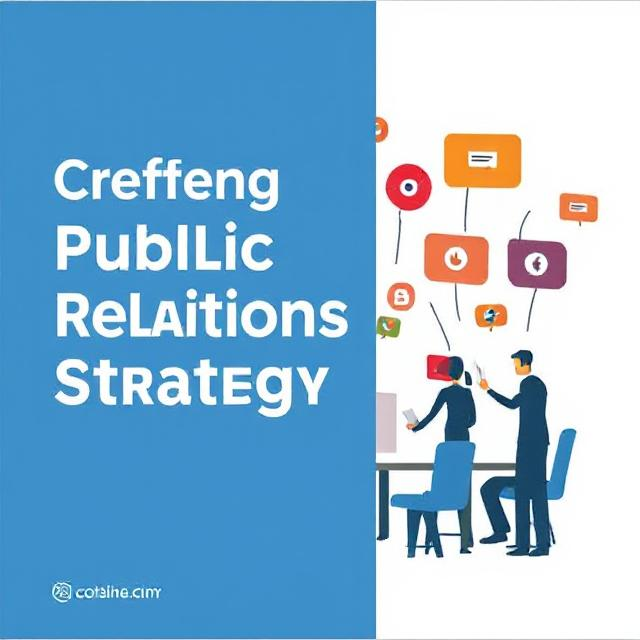
In today’s fast-paced and highly connected world, an effective Public Relations (PR) strategy can be a game-changer for any business or individual. Public Relations is more than just managing reputations; it’s about building meaningful relationships with your audience, promoting your brand, and communicating your message in a way that resonates. This guide will walk you through the essential steps of crafting the perfect PR strategy that delivers measurable results.
What is Public Relations?
Public Relations (PR) is the practice of managing and guiding perceptions of your brand, product, or service by influencing public opinion. A well-thought-out PR strategy aims to foster a positive image while building trust and credibility with the audience. Unlike advertising, which relies on paid media, PR focuses on earned media, organic engagement, and relationship building.
Why is a Public Relations Strategy Important?
A clear and comprehensive PR strategy provides a roadmap for managing your communications and achieving business goals. Here are a few reasons why it’s crucial:
- Reputation Management: Builds a positive brand image and addresses potential crises effectively.
- Increased Visibility: Helps you gain media coverage and engage with a broader audience.
- Trust Building: Strengthens your relationship with stakeholders, customers, and partners.
- Crisis Mitigation: Allows you to respond quickly and appropriately to negative press or situations.
- Support Business Objectives: Aligns with your marketing, sales, and operational goals.
Step-by-Step Guide to Crafting the Perfect PR Strategy
Step 1: Define Your Goals and Objectives
Start by identifying the purpose of your PR strategy. What do you hope to achieve? Common PR goals include:
- Building brand awareness
- Enhancing your reputation
- Managing a crisis
- Launching a new product or service
- Increasing community engagement
Ensure your goals are SMART (Specific, Measurable, Achievable, Relevant, and Time-bound).
Step 2: Understand Your Audience
Knowing your audience is key to delivering a message that resonates. Identify and segment your target audience based on:
- Demographics (age, gender, location)
- Psychographics (interests, values, attitudes)
- Media consumption habits (preferred channels and platforms)
Craft messages tailored to each audience segment to ensure greater impact.
Step 3: Develop Your Core Messaging
Your core messaging should reflect your brand’s values, mission, and objectives. It should be consistent across all communication channels and resonate with your audience. Focus on clarity, authenticity, and relevance.
Ask yourself:
- What makes your brand unique?
- What do you want your audience to know, feel, or do?
- How can you build trust and engagement?
Step 4: Choose the Right Communication Channels
Your PR strategy should be omnichannel to maximize reach. Select the most appropriate channels based on your target audience’s preferences.
- Traditional Media: Newspapers, magazines, radio, and TV
- Digital Media: Blogs, websites, and online publications
- Social Media: Facebook, Instagram, Twitter, LinkedIn, and YouTube
- Influencer Marketing: Collaborate with key influencers who align with your brand
- Events: Trade shows, conferences, and community activities
Step 5: Create a Content Plan
Content is at the heart of a successful PR strategy. Develop a plan that outlines what type of content you’ll produce and when. Types of PR content include:
- Press Releases: Announce new products, partnerships, or milestones
- Feature Stories: Share brand stories or customer success stories
- Media Kits: Provide journalists with the resources they need to cover your brand
- Social Media Campaigns: Build brand awareness and engage with your audience in real-time
- Thought Leadership Articles: Establish your expertise in the industry
Measuring the Success of Your PR Strategy
Measuring and analyzing the impact of your PR efforts is critical for continuous improvement. Here are some key performance indicators (KPIs) to track:
- Media Coverage: Number and quality of media mentions
- Social Media Engagement: Likes, shares, comments, and follower growth
- Website Traffic: Increase in visitors following media campaigns
- Share of Voice: How much attention your brand receives compared to competitors
- Sentiment Analysis: Understanding how people feel about your brand
Use tools like Google Analytics, social media analytics, and media monitoring platforms to measure performance.
Common Pitfalls to Avoid
- Lack of a Clear Strategy: Don’t wing it. An ad hoc approach won’t deliver lasting results.
- Ignoring Crisis Preparedness: Be proactive. Have a crisis communication plan in place.
- Overlooking Target Audience Needs: Always focus on what resonates with your audience.
- Inconsistent Messaging: Mixed messages weaken your brand’s credibility.
Crafting the perfect public relations strategy is about more than just gaining media coverage—it’s about building authentic relationships and managing perceptions effectively. By defining clear goals, understanding your audience, creating strong messages, and leveraging the right communication channels, you can position your brand for long-term success.
Whether you’re a startup, a growing business, or an established organization, a strategic PR plan can help you stand out in a crowded market, boost your reputation, and connect with your audience on a deeper level.

